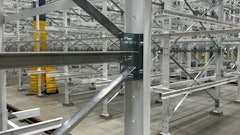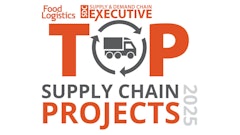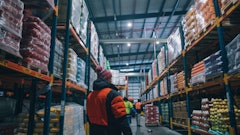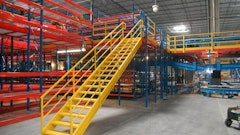Choosing the right location to expand or consolidate food manufacturing, processing or distribution operations is quite a challenge, leading many companies to solicit the help and expertise of professionals. Deane Foote of Fort Worth, TX--based Carter--Burgess says one of the first things he does is thoroughly understand a company's objectives relating to its products, the location of its markets and the logistics models required to get those products to market quickly.
The first step in the site selection process is to develop an overall plan of what your goals are, agree the experts. This will help ensure avoiding some common pitfalls involved in this complex process, says John Schook, manager of the food and beverage group at Carter--Burgess.
"If you don't develop a master plan even before you locate a piece of real estate, you can end up with a piece of property that's too small to accommodate future needs--or it might not have enough sewage or water capacity for future requirements," Schook says. A good investment on the front end of a new project, whether it's a food DC or food manufacturing or processing facility, is the master plan for the entire project including the property and the facility.
Schook recommends that companies invest in detailed programming analyses of the facilities themselves. Make sure you have a full understanding of the number and position of pallet positions you will require, he says. Also consider the number of truck movements for shipments of finished products and for deliveries of raw material sfor immediate and future needs. Also plan to have enough room for trailer parking and maintenance areas as well.
Having a well--planned document outlining exactly what the specific needs are for the size of the property required, as well as the size and configuration of the facility, will help make the project move along more smoothly, Schook says. For instance, if a company anticipates future growth, it's important to position infrastructure components, such as fire protection, gas, sewage, water and power mains, so they do not to compromise future expansions.
To minimize upfront development costs, sites should be fairly level and smooth. Blasting large rocks can get very expensive.
Companies with a short development timeframe need sites with infrastructure and roadways in place, but these sites are usually more expensive. Companies with more time can look to a community to provide free or discounted land and government incentives that deliver infrastructure at no cost to the company.
Transportation makes the largest impact on the cost of logistics. That's why ideal sites possess quick access to commercial routes, which affect the delivery of raw materials, truck fleet availability, shipment rates and backhaul opportunities. "The ability to deliver in a timely manner without delay or losses is paramount to profitability," Schook says.
While trucks are the standard method of transferring goods, alternative transportation modes could provide cost savings. Rail and inter--modal shipping can be suitable options for receiving heavy food and beverage materials that don’t require precise delivery arrivals.
Another important aspect of logistics is the design of the building. Preliminary planning should properly accommodate items such as wastewater capacity, necessary acreage and truck dock locations. Oversights in these areas can "cause the process flow to be adjusted," so that a plant works less efficiently because of the site's constraints, Schook says.
Becoming familiar with local, state and federal permits, zoning regulations and restrictions and communicating with officials about water capacity and wastewater pre--treatment abilities will aid in the design of the facility.
Labor Pains
While various locations may meet transportation needs, a reliable and productive labor force can be harder to find. It is critical, therefore, to identify good community characteristics in site selection, says Craig Morgan, group manager of the Real Estate Services Group at Carter & Burgess.
Turnover rates should also be analyzed, he says, because "when you have to retrain employees time and time again, operating costs can substantially increase for companies."
The majority of communities provide a survey outlining wage and benefit rates, which are largely impacted by geography and organized labor presence. Often, incentive packages are tied to companies meeting or exceeding community wage averages.
When Country Fresh Inc., Houston, outgrew its current produce processing center near Greenville, SC, company executives knew they wanted to move the plant to another site in the same region. Carter & Burgess helped the company select a site just 10 miles away on which to build a 50,000--square--foot plant. Doing so allowed the company to keep its 225 employees and to continue to reach its customer base.
The site came with highway frontage, sufficient utility capacities and tax abatement incentives. Carter & Burgess also conducted wetland impact studies on the site.
Chris Petro, chief financial officer of Country Fresh, says any real estate agent can go and find a site, but he valued the expertise of Carter & Burgess in evaluating infrastructure, conducting environmental studies and finding incentives.
"They knew what questions to ask," he says. "I'm sure a lot of times these incentives are available, but most of the time companies don’t talk to the right people to utilize them. Carter & Burgess did."
Don't forget the local community, caution the experts. For example, a recent hue and cry went up in a Wisconsin town when local residents deemed a Roundy's distribution center there an eyesore and demanded that the facility be torn down. The company spent $65 million for the 1.1 million--square--foot DC on 112 acres. Residents expected nine smaller buildings rather than the larger facility. Similar public outcry has been directed at warehouse projects planned in other parts of the country as well.
Site selection consultants can help avoid such impediments to the march of progress by keeping communities informed about the exact plans that incoming companies have so there are no surprises. "A good reason to work with a company like ours is we can help navigate the community awareness issues to educate local communities," Schook says.
















